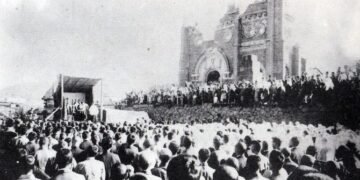Why the Keyboard’s “QWERTY” Layout Is a Writer’s Hidden Advantage
Have you ever stopped to wonder why the keys on your keyboard are arranged in such a strange way? The QWERTY layout, named after the first six letters on the top row, is something most writers encounter every day, yet few know the intriguing trivia behind its design—and its subtle impact on writing.
Originally developed in the 1870s by Christopher Latham Sholes for typewriters, QWERTY wasn’t arranged for efficiency but to solve a mechanical problem. Early typewriters often jammed when adjacent keys were pressed too quickly. To address this, Sholes designed QWERTY to space out commonly used letter pairs, slowing down typists and reducing jams. Ironically, this layout stuck even as typewriters evolved and eventually became obsolete.
But here’s where it gets interesting: while QWERTY wasn’t built for speed, it has accidentally benefited writers in ways Sholes likely never intended. The layout subtly shapes how we interact with language and influences our rhythm as we type.
For instance, studies have shown that the placement of letters impacts the “feel” of typing certain words. Words with letters primarily on the right-hand side (like “hope” or “light”) tend to feel lighter and quicker to type, while those leaning to the left (like “draw” or “bread”) can feel more deliberate and grounded. This phenomenon, known as “typefeel,” can subconsciously affect the mood and pacing of a writer’s work.
Moreover, QWERTY’s layout inadvertently encourages balance. Writers naturally use both hands in almost equal measure, which can help maintain physical comfort during long typing sessions. It’s one of the reasons why many writers report feeling “in the zone” as their fingers dance across the keyboard—it’s a rhythm created by design quirks that have lasted over 150 years.
Fun trivia: Have you ever noticed that some of the most commonly used letters—like E, T, A, and O—are easier to reach? That’s no accident. While the layout wasn’t designed for efficiency, these letters ended up in convenient spots simply because they’re used so often. This hidden accessibility boosts writing speed over time, even for those who don’t type professionally.
QWERTY may not have been built with modern writers in mind, but its legacy is a reminder that even the smallest tools can have a big impact on the craft of writing.









































